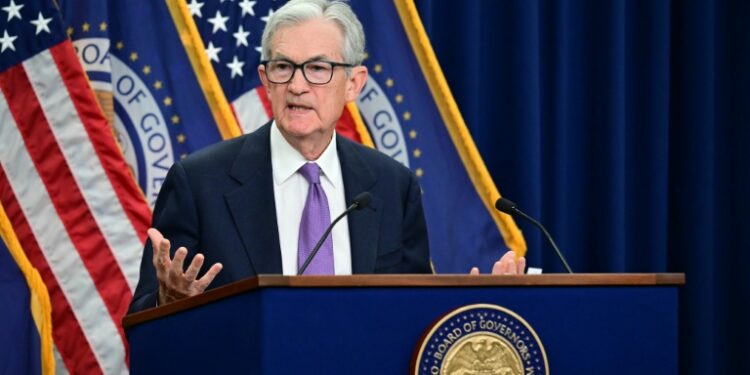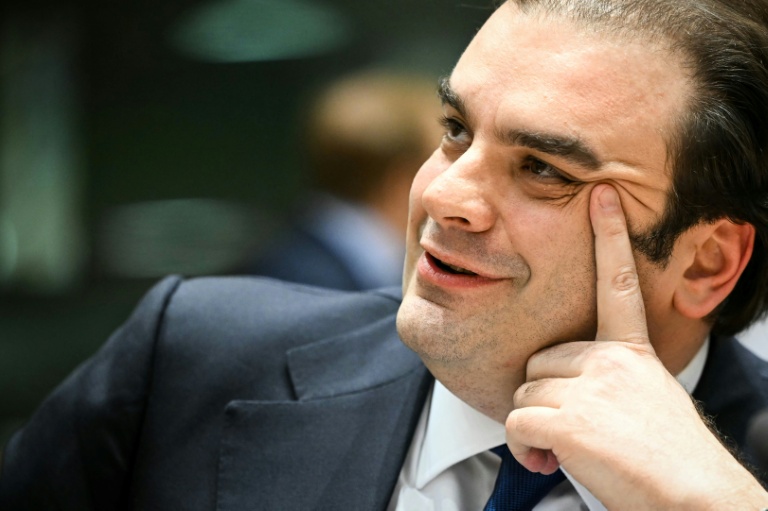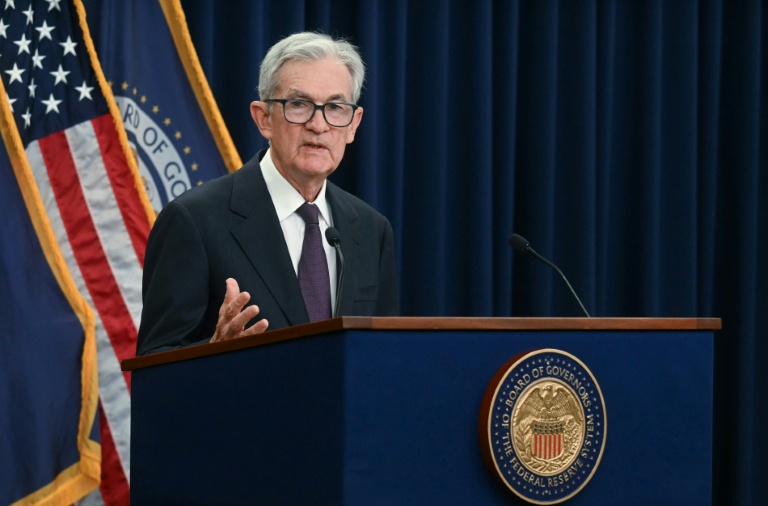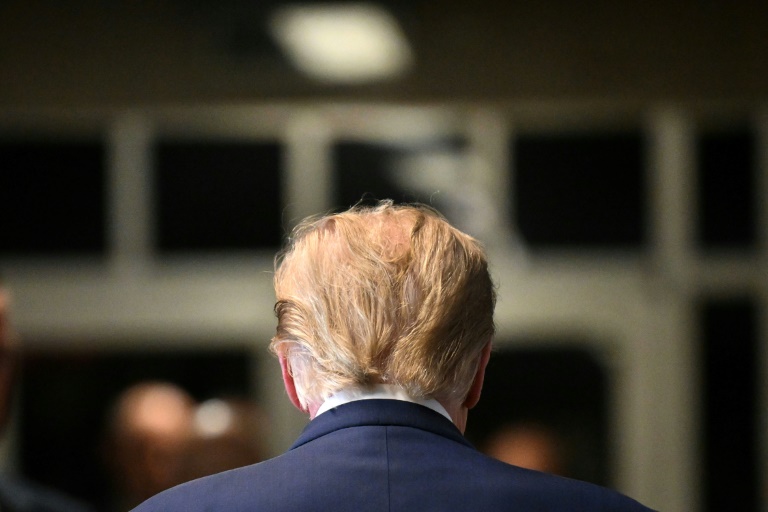Washington (AFP) – The US Federal Reserve on Wednesday announced its second quarter-point rate cut in a row to bolster the flagging labor market, in a move that highlighted the growing division in its ranks. Policymakers voted 10-2 in favor of lowering the bank’s key lending rate to between 3.75 percent and 4.00 percent, the Fed said in a statement. Opposed to the action were Fed governor Stephen Miran, who backed a bigger half-point cut, and Kansas City Fed president Jeff Schmid, who “preferred no change to the target range for the federal funds rate at this meeting,” the Fed said.
“We continue to face two-sided risks,” Powell told reporters at a press conference in Washington. He added that during the Fed’s discussions this week, “there were strongly differing views about how to proceed in December.” “A further reduction in the policy rate at the December meeting is not a foregone conclusion, far from it,” he said. Wall Street stocks fell after Powell threw cold water on the prospects of a December rate cut, ending the day mixed.
– Shutdown weighing on economy –
The decision to cut rates boosts the US economy at a time when businesses are still digesting the effects of President Donald Trump’s sweeping tariffs, and buys policymakers some more time as they wait for the end of the government shutdown. Republicans and Democrats remain politically gridlocked almost a month after the start of the shutdown, which has resulted in a suspension of publication of almost all official data.
“The shutdown of the federal government will weigh on economic activity while it persists, but these effects should reverse after the shutdown ends,” Powell said on Wednesday. “We’re going to collect every scrap of data we can find, evaluate it, and think carefully about it,” he added. “If you’re driving in the fog, you slow down.” Fed officials have in recent months flagged concerns that the labor market is cooling, causing them to shift their attention to bolstering hiring, even though inflation remains above the Fed’s target.
“We have 4.3 percent unemployment. We have an economy that’s growing close to two percent, so overall it’s a good picture,” Powell said on Wednesday. “But in terms of our policy, we have upside risks to inflation, downside risks to employment,” he said. “And this is a very difficult thing for a central bank.”
“The Fed’s rate cut is a tactical error,” Moody’s Analytics banking industry practice lead Chris Stanley wrote in a note shared with AFP. “The data does not support cutting rates,” he continued, adding that the Fed could find itself walking the cut back in the near future due to high inflation. “We expect the Fed to slow the pace of cuts from here,” Oxford Economics deputy chief US economist Michael Pearce wrote in a note to clients.
– Fed to end QT –
The Fed also announced Wednesday that it would soon end its policy of shrinking the size of its balance sheet, in a move that was widely expected. “The Committee decided to conclude the reduction of its aggregate securities holdings on December 1,” the Fed said in a statement confirming its decision. The Fed’s balance sheet ballooned in the early days of the Covid-19 pandemic to almost $9 trillion. The bank has been gradually reducing its size in recent years, although it remains well above its pre-pandemic levels at around $6.6 trillion.
“I think they’re very cautious about stresses in the financial markets,” former Cleveland Fed President Loretta Mester told AFP ahead of the rate announcement.
© 2024 AFP





















